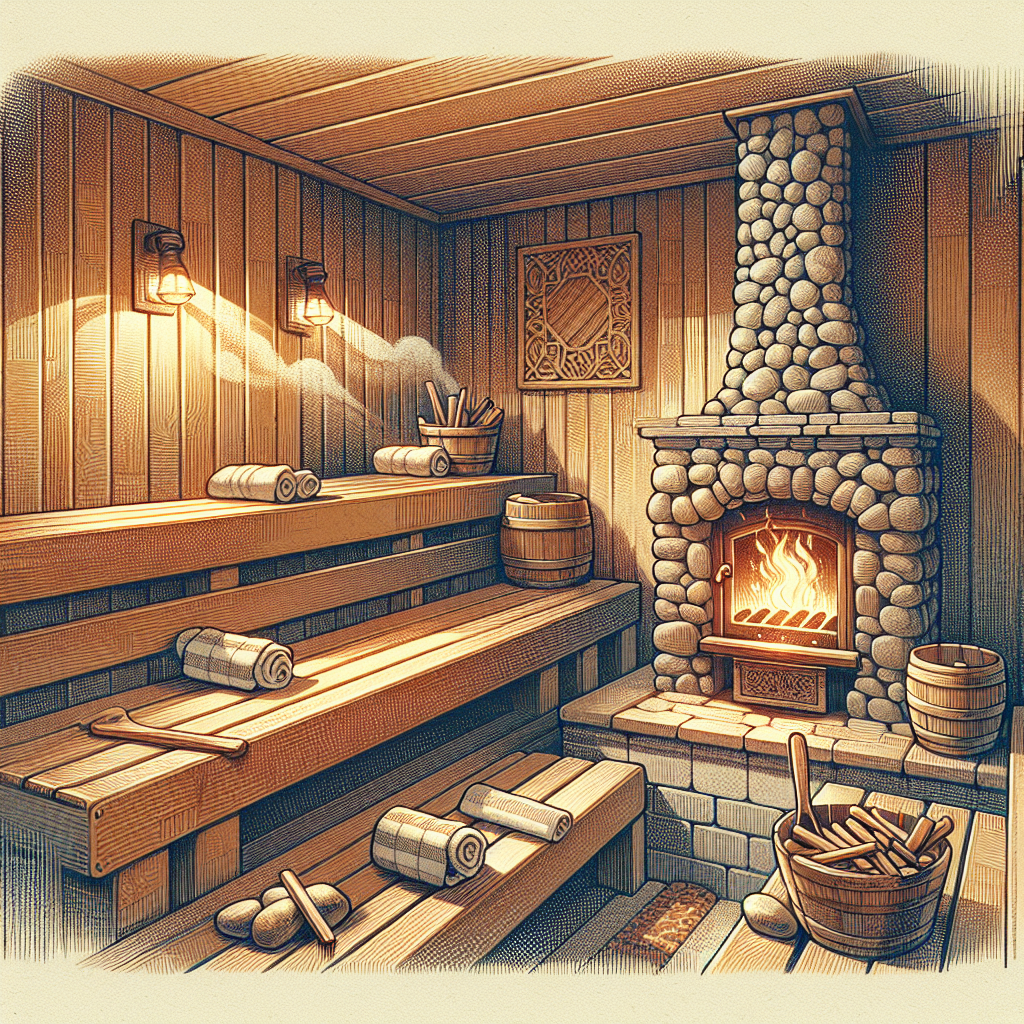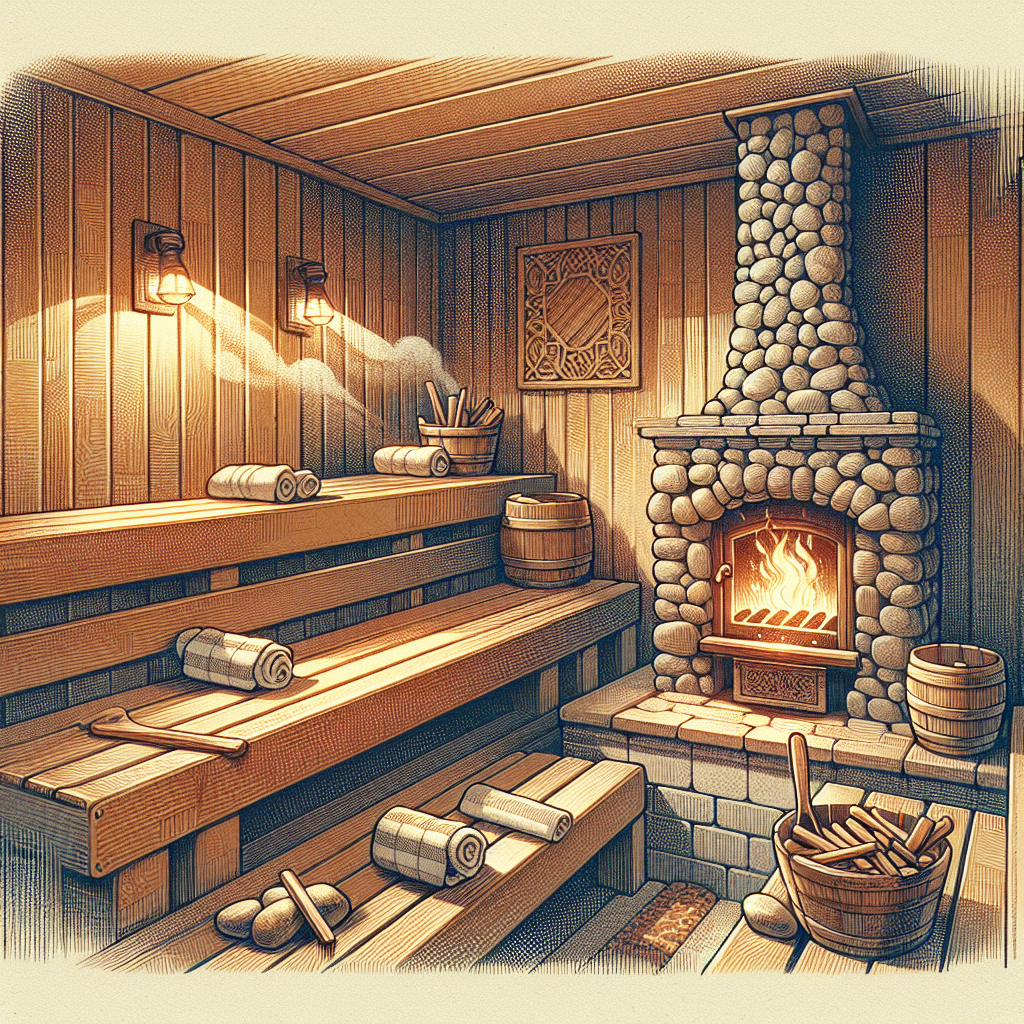Are you looking to indulge in the ultimate relaxation experience? If so, one question that may be on your mind is, “What is the ideal temperature for a traditional sauna?” The answer to this question is crucial for achieving the perfect balance of heat and comfort during your sauna session. In this article, we will explore the ideal temperature range for traditional saunas and how it can enhance your overall sauna experience. Whether you’re a seasoned sauna enthusiast or a first-time sauna-goer, understanding the optimal heat level will ensure you get the most out of your sauna session. So, let’s dive in and discover the perfect temperature to make your sauna experience truly unforgettable.

Temperature range for traditional saunas
Temperature requirements for traditional saunas
When it comes to traditional saunas, temperature plays a crucial role in creating the desired sauna experience. The ideal temperature range for traditional saunas typically falls between 170°F to 190°F (76°C to 88°C). This range strikes a balance between creating a hot and steamy environment while still being comfortable for most individuals.
Recommended temperature range for traditional saunas
In order to achieve the full benefits of a traditional sauna, it is generally recommended to maintain a temperature range of 170°F to 190°F (76°C to 88°C). This range ensures that the body is exposed to sufficient heat to induce sweating and promote relaxation. However, it is important to note that everyone’s tolerance for heat may vary, so it is essential to listen to your body and adjust the temperature accordingly.
Factors influencing the ideal temperature
Several factors come into play when determining the ideal temperature for a traditional sauna. These factors include cultural preferences, health considerations, sauna size, insulation, and the duration and frequency of sauna sessions. By understanding these factors, you can customize your sauna experience to suit your individual needs and preferences.
Understanding the temperature requirements
Why temperature is important in a sauna
Temperature is an essential component of a sauna experience due to its numerous benefits for the body and mind. The high temperatures in a traditional sauna help to stimulate blood circulation, dilate blood vessels, relax muscles, and induce sweating. These physiological responses cleanse the body of toxins, improve cardiovascular health, and promote a sense of relaxation and well-being.
Effect of temperature on the body
The body reacts differently to varying temperatures in a sauna. As the temperature increases, the heart rate and metabolic rate also increase, causing the body to work harder to regulate its internal temperature. This increased effort results in more calories being burned, making saunas a popular choice for those seeking to lose weight. The heat also helps to open the pores and cleanse the skin, leaving it feeling refreshed and rejuvenated.
How temperature affects the sauna experience
The temperature in a sauna affects the overall experience, influencing factors such as sweating, relaxation, and the perceived intensity of the heat. Higher temperatures promote more intense sweating, which aids in the detoxification process and helps to eliminate impurities from the body. Additionally, a higher temperature can induce a deeper sense of relaxation by allowing the muscles to loosen and release tension. However, it is crucial to find a temperature that is comfortable for you in order to fully enjoy and benefit from your sauna session.
Recommended temperature range
Typical temperature range for traditional saunas
The typical temperature range for traditional saunas falls between 170°F to 190°F (76°C to 88°C). This range is commonly recommended as it strikes a balance between creating a steamy environment and ensuring comfort during the sauna session. However, it is important to remember that personal preferences and specific health conditions should always be taken into account when adjusting the temperature.
Regional variations in ideal sauna temperatures
Sauna traditions vary across different regions, and as a result, ideal sauna temperatures differ as well. In Nordic countries such as Finland, where saunas are deeply ingrained in the culture, temperatures may reach as high as 200°F (93°C). On the other hand, in countries with warmer climates, such as Japan, sauna temperatures tend to be lower, ranging from 140°F to 160°F (60°C to 71°C). These regional variations reflect the cultural and climatic influences on sauna practices.
Adjusting temperature to personal preference
While there are recommended temperature ranges for traditional saunas, it is important to adjust the temperature according to your personal preferences. If you find the sauna too hot, you can lower the temperature slightly to ensure a more comfortable experience. Similarly, if you prefer a more intense heat, you can increase the temperature within a reasonable range. Remember to always listen to your body and make adjustments accordingly to ensure a safe and enjoyable sauna session.
Factors influencing the ideal temperature
Cultural preferences
Cultural influences play a significant role in determining ideal sauna temperatures. Different cultures have their own traditions and practices when it comes to saunas, and these traditions often dictate the desired temperature range. For example, in Finnish sauna culture, temperatures are typically higher, whereas in Japanese sauna culture, temperatures tend to be lower. Understanding and respecting these cultural preferences can enhance your sauna experience while also honoring the heritage and traditions associated with saunas.
Health and medical considerations
Individuals with certain health conditions or medical concerns may need to adjust the sauna temperature to accommodate their specific needs. For individuals with cardiovascular issues, it is generally recommended to avoid extremely high temperatures and instead opt for a lower temperature range. Pregnant women, individuals with high blood pressure, or those with respiratory conditions should also consult with their healthcare provider before using a sauna. It is always important to prioritize your health and safety when determining the ideal temperature for your sauna session.
Sauna size and insulation
The size and insulation of a sauna can have a significant impact on the overall temperature. Smaller saunas tend to heat up faster and reach higher temperatures more quickly, while larger saunas may take longer to heat up but can still reach the desired temperature range. Proper insulation is crucial in maintaining the desired temperature and preventing heat loss. High-quality insulation ensures that the sauna stays hot and allows for a more consistent experience. It is important to consider these factors when choosing or designing a sauna to achieve the ideal temperature.
Sauna duration and frequency
The ideal temperature for a traditional sauna can also depend on the duration and frequency of sauna sessions. If you plan on spending a longer time in the sauna, it may be more comfortable to lower the temperature slightly to avoid overheating. Similarly, if you plan on using the sauna frequently, it may be beneficial to adjust the temperature to a level that allows for regular use without causing discomfort or fatigue. Finding the right balance between temperature and duration/frequency is key to maximizing the benefits of a sauna while prioritizing your well-being.
Additional considerations
Humidity levels in traditional saunas
Humidity levels in traditional saunas can vary depending on the amount of water thrown on the heated rocks. The addition of water creates steam, thereby increasing the humidity inside the sauna. Higher humidity levels can make the sauna experience feel more intense and may result in increased sweating. However, it is important to note that some individuals may find high humidity uncomfortable. It is recommended to start with lower humidity levels and gradually increase it according to personal preference.
Combining temperature with aromatherapy or steam
Another way to enhance the sauna experience is by combining temperature with aromatherapy or steam. Adding essential oils or herbs to the water can release pleasant scents into the sauna, promoting relaxation and creating a soothing environment. Similarly, steam generators can be used to increase the humidity and create a steamier atmosphere. These additional elements can complement the temperature and contribute to a more enjoyable and therapeutic sauna session.
Heat management techniques
Proper heat management techniques are essential to ensure a safe and comfortable sauna experience. It is recommended to preheat the sauna before entering to ensure that the desired temperature is reached. To regulate the temperature during the session, you can control the amount of water thrown on the rocks or adjust the ventilation to allow for air circulation. These techniques allow you to have better control over the temperature and tailor the sauna environment to your liking.
Conclusion
The ideal temperature for a traditional sauna falls within the range of 170°F to 190°F (76°C to 88°C). By understanding the temperature requirements, the effects on the body, and the factors that influence these temperatures, you can customize your sauna experience to suit your preferences and needs. Cultural influences, health considerations, sauna size and insulation, and the duration and frequency of sauna sessions all play a role in determining the ideal temperature for your sauna sessions. Remember to listen to your body, prioritize your health, and make adjustments accordingly to enjoy a safe and rejuvenating sauna experience.

